Blue Carbon
Wetlands are emerging centre stage when it comes to fighting our climate emergency. So why are they still so undervalued?

It’s an early summer morning and the sun is already warming the exposed dips and whirls of the mudflats at low tide.
A group of avocets pick their way delicately across the saltmarsh, long beaks searching the ground. A small egret glints bright white, eye catching in the early morning sun and overhead a marsh harrier rises and falls gently with the thermals. The reeds rustle as wagtails and finches bob from bulrush to flag iris and huge dragonflies whizz past.

Here at Steart Marshes in Somerset, this gentle scene might persuade you it’s business as usual but our unique coastal landscapes are under huge pressure. Images of storm surges, rising sea levels and flash floods and the devastation they wreak on people and their homes are becoming all too frequent. That climate change is here, now, is something staff at Steart Marshes are all too aware of.
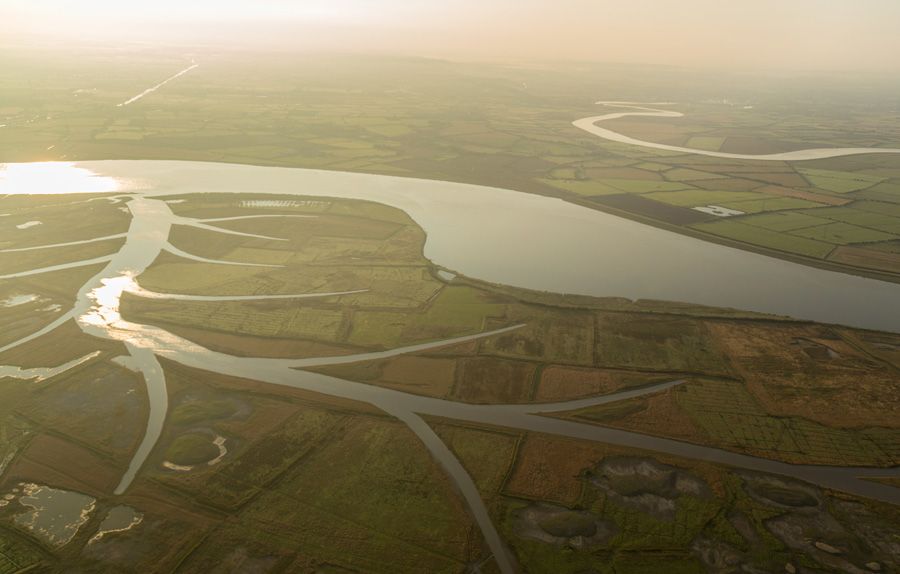
“Working on the wetlands, we see the effects of climate change such as unusual birds being blown off course or species arriving or leaving at different times because our seasons are not as definitive as they used to be,” says Alice Beaney, Assistant Warden. “Twenty years ago egrets would not have been seen here,” she adds.
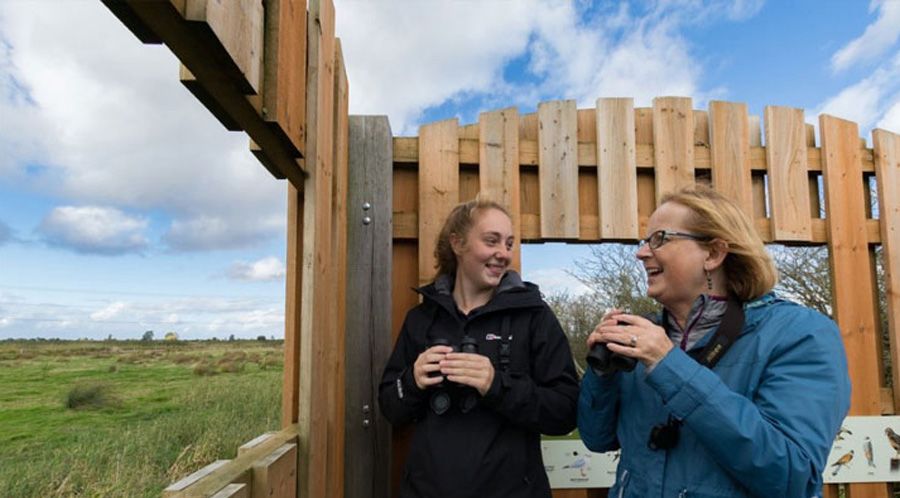
Steart Marshes is a created saltmarsh, the first of WWT’s Working Wetlands – places that demonstrate how wetlands are productive and useful. Research being carried out here is providing evidence to show the world the important role wetlands can play in the climate change fight. Wetlands are powerful ecosystems, sustaining our planet, but there is still plenty to learn about how it all works.
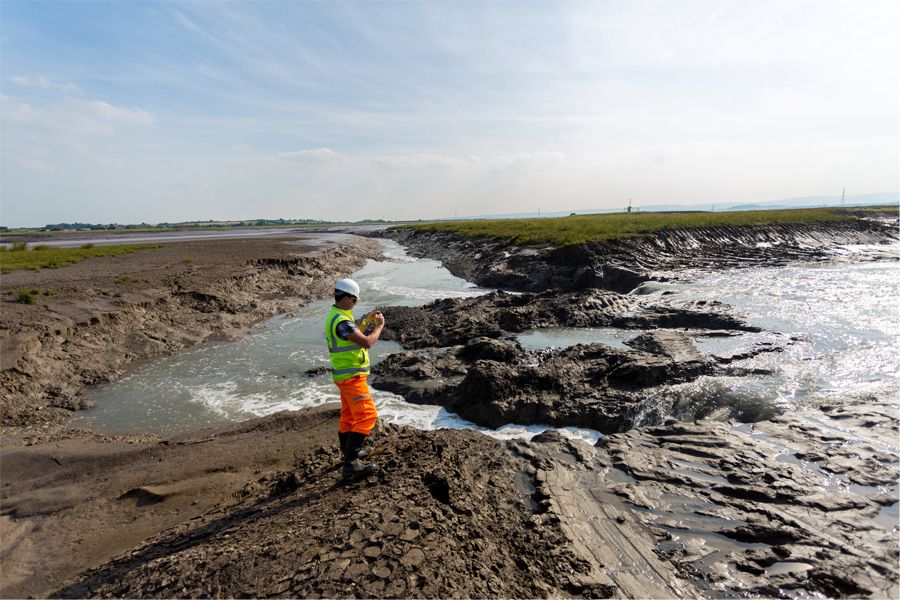
“Saltmarshes, in particular, can be very efficient at locking away carbon. When saltmarsh plants die, rather than decomposing and releasing their carbon into the atmosphere, they become buried in the mud. As sea levels rise more sediment layers get buried and more carbon gets locked beneath the mud.”
This is known as blue carbon, a high-density carbon that accumulates in oceans and coastal ecosystems as a result of their high productivity and sediment trapping ability. The rate of carbon sequestration on coastal wetlands is greater than in all forests combined, despite forests covering much larger areas.
What is a saltmarsh?
Saltmarshes are coastal wetlands that are periodically flooded and drained by the tides from the sea. They’re populated by plants and animals uniquely adapted to living there.
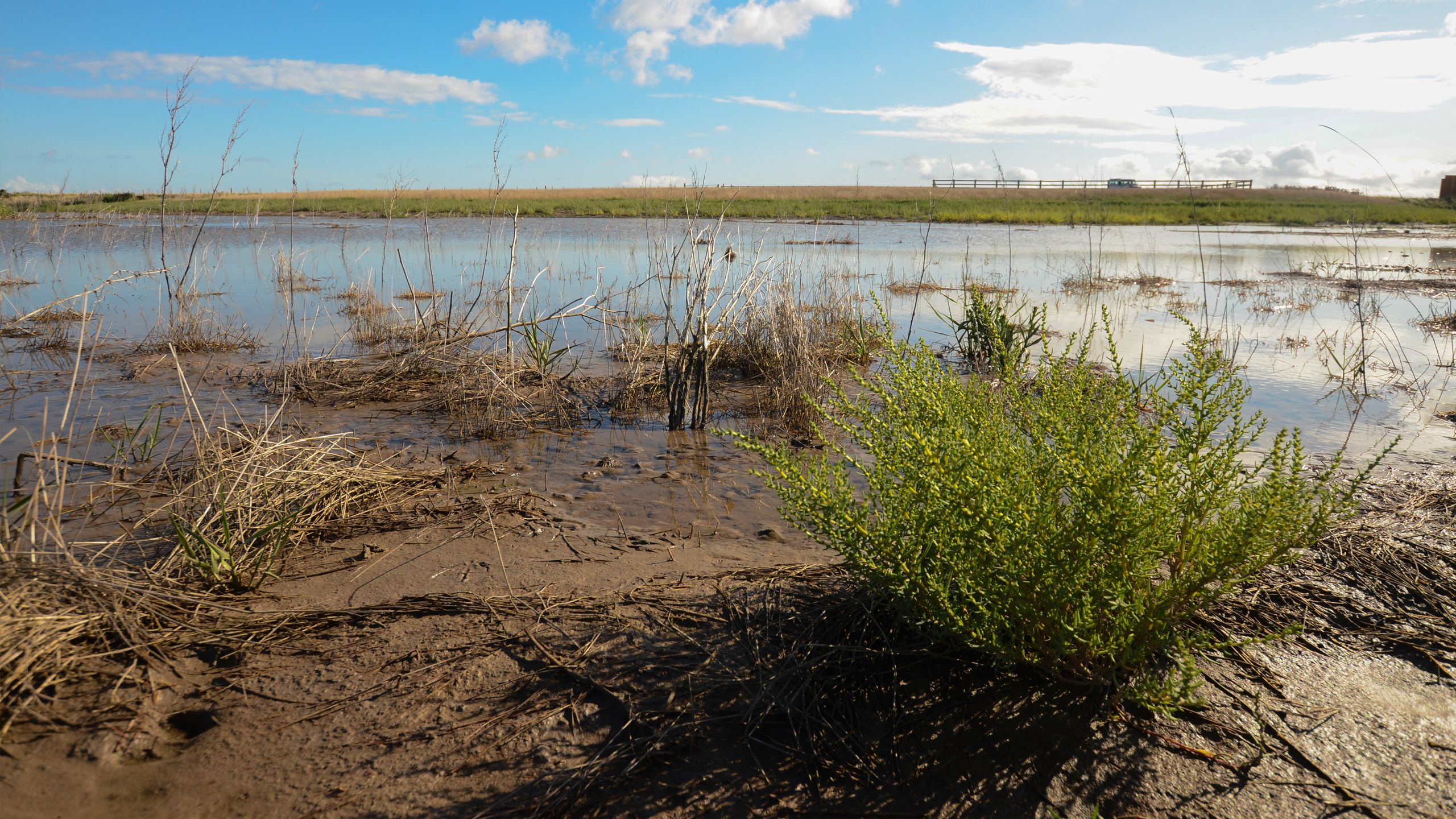
It’s a slightly different process to what happens in the trees that we are all familiar with. As plants grow they absorb carbon from the atmosphere through photosynthesis, and this carbon remains in the plant for as long as it lives. This is why trees are important because they are long-lived and so keep the carbon out of the atmosphere for decades. But when these trees die, they decompose and release their carbon.
“What happens in wetlands is different and means the carbon can be stored for hundreds of years,”
Wetlands are special because they bury the carbon from decomposing plants before it can be released back into the atmosphere.
Coastal wetlands are particularly good at this as new sediment is brought in on tides and this buries the carbon. This inundation means the soil remains wet and this inhibits microbial action and slows down decomposition. When more carbon is sequestered than released, the carbon accumulates.
“The science is clear. Wetlands are the most effective carbon sinks on our planet.”
Martha Rojas Urrego, Secretary General of the Ramsar Convention on Wetlands.
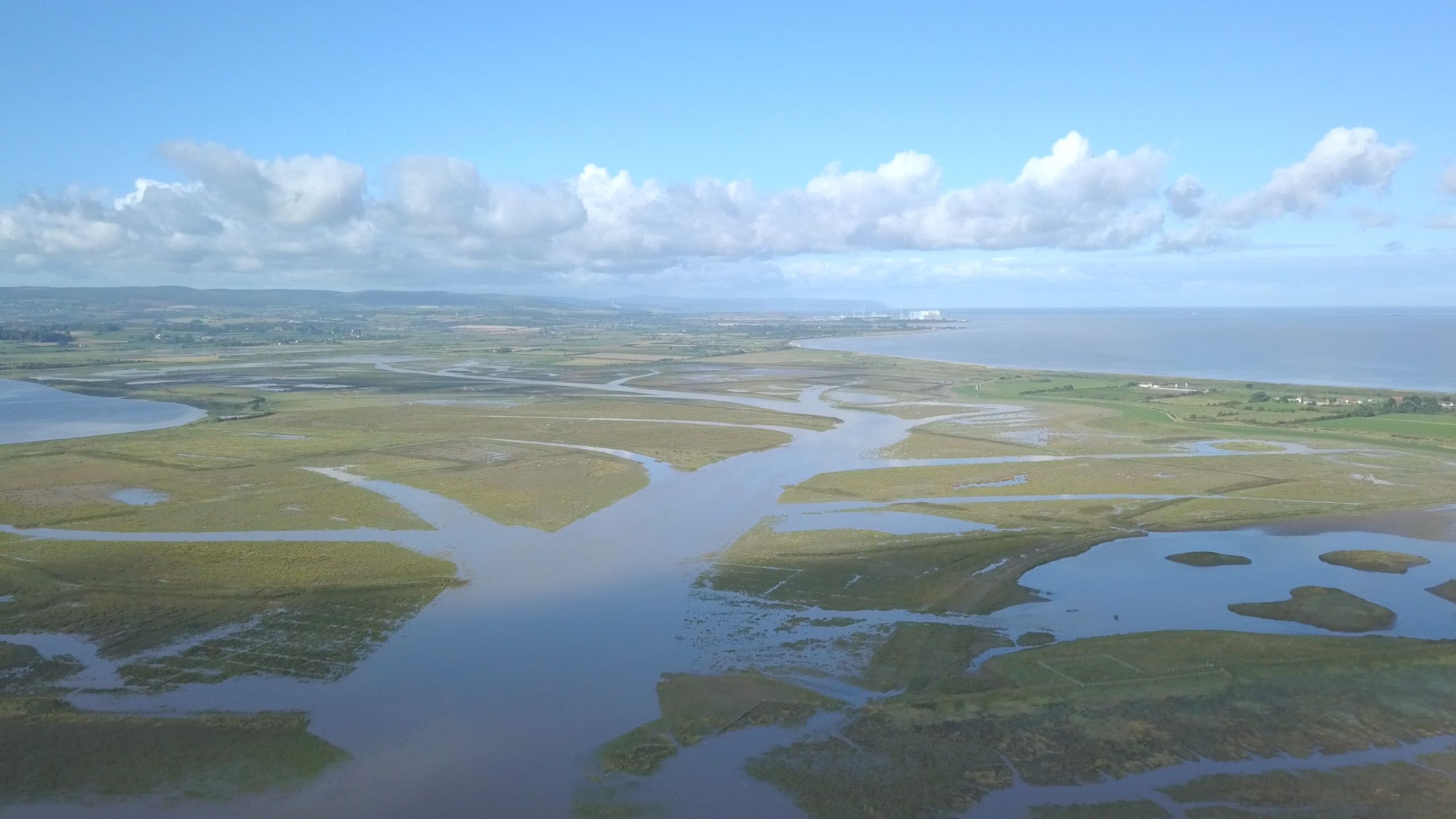
Climate change: the global environmental challenge of our time.
The Intergovernmental Panel on Climate Change (IPCC) has warned that global temperatures need to be kept from rising by more than 1.5°C. We've already passed 1°C.
Technology is being explored to remove CO2 – the biggest culprit – from the atmosphere, but it is expensive and complex. Politicians are currently committed to planting 30,000ha of new woodland across England between 2020 and 2025 by launching the England Tree Strategy. And factoring wetlands into government action would be the logical next step.
“Wetlands are vital weapons in the fight against climate change. Put together, peatlands and coastal wetlands such as mangroves, saltmarshes and sea grass beds store more carbon (CO2) than all of the world’s forests combined.”
Mud, mud glorious mud
Two people who really appreciate the magic of mud are Dr Hannah Mossman and Rachel Dunk from Manchester Metropolitan University.
Hannah, Rachel and their team have been studying the mud locked deep below Steart Marshes, with a particular focus on determining the amount of carbon buried here.
“We estimate around 30,000 tonnes of carbon has been buried on this site since its restoration. This is probably an underestimate because it's become more vegetated, which is likely to increase the amount of carbon - and we have samples in the freezer waiting to be analysed to find out! The sediment accreting now is more carbon rich than the previous agricultural soil, which had become really carbon depleted.”
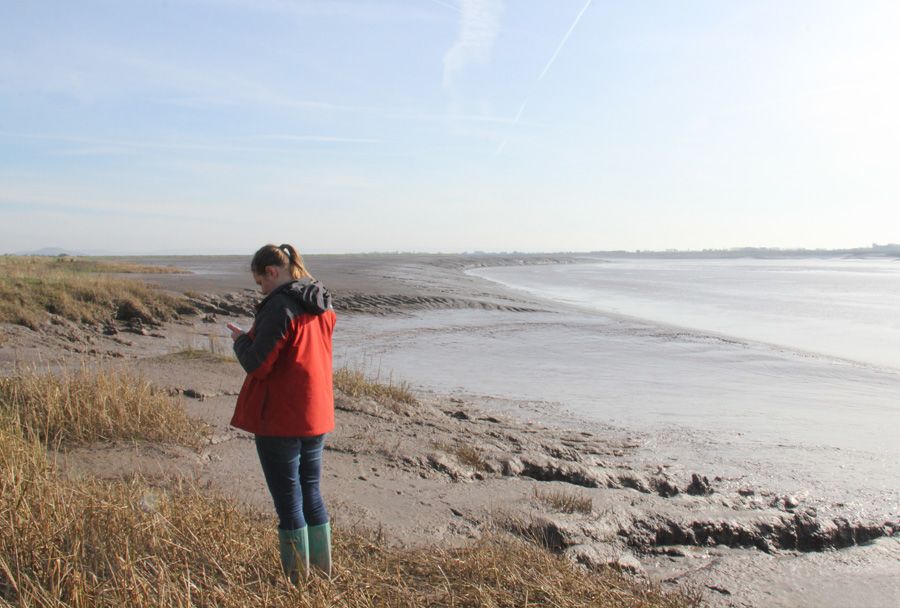
The research also shows how efficient saltmarsh packs a powerful punch when it comes to storing large amounts of carbon in a small space.
“To put this in context, the carbon burial rate is about four times faster than the carbon captured by sitka spruce trees, and a considerably larger area of spruce would therefore be needed for the same amount of carbon captured at Steart,” says Hannah
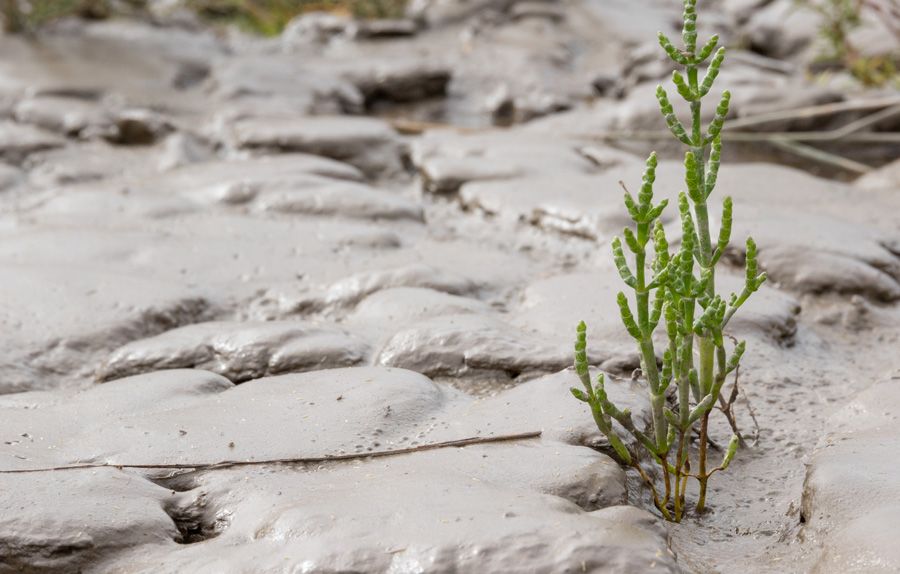
Blue carbon has historically been overlooked, primarily because the habitat is not big. Compared to forests it covers a very small part of the UK. But carbon burial magnitudes are huge compared to their size. The soil is really wet and because of this, decomposition is slowed. The sediment brought in to saltmarshes like Steart from the sea goes on top of this condensed wet soil, burying the carbon deeper. If the saltmarsh has high sedimentation rates, this indicates lots of carbon is being buried.

Dr Hannah Mossman, senior lecturer of ecology at Manchester Metropolitan University
Dr Hannah Mossman, senior lecturer of ecology at Manchester Metropolitan University

But it’s not just in the UK where wetlands play a vital role. Hannah’s research joins a growing body of evidence proving just how efficient wetlands are at absorbing carbon. Around the world they’re proving a secret weapon in the fight against climate change.
In 2017 research was carried out by scientists from Tokyo University on the carbon sequestration potential of the mangrove forests in the Sundarban. They compared carbon uptake rates to carbon emission rates from a coal-based power plant in Kolaghat, India. They concluded that the Sundarbans managed to sequester 98% of the carbon emitted by the power plant in one year. Although simply offsetting carbon won’t treat the root cause of climate change, which requires a shift in our fundamental ideology, it’s a step in the right direction.
Wetland loss: consequences for us all
Hidden among the thick, green sprawl of the mangrove trees the little red flags tied to tree trunks are especially eye catching. In this, the densest and most dangerous part of the Sundarbans wetland in coastal Bangladesh, they are the only signs of human habitation.
They tell a sinister tale. The pieces of cloth are tied to a tree each time a tiger kills a human. A recognition of another life lost. The red flags appear regularly along the rivers that snake through the Sundarban Tiger Reserve.
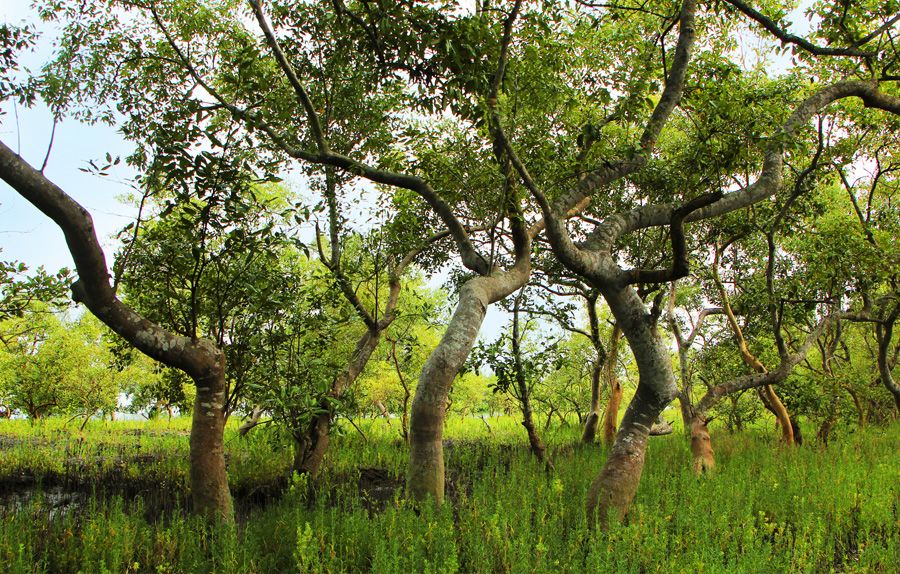
Tigers in the Sundarbans kill around 60 people a year. No one really knows why but experts believe the most likely cause is depletion of their natural habitat and a shortage of prey.
The Sundarbans covers around 10,000 square kilometres and is home to around 4 million people. It is the largest continuous mangrove forest in the world, despite being almost half the size it was in the late 1800s. As people cut the trees and rising seas bring saline waters the forest and the land are shrinking, forcing man and tiger into a dangerous cohabitation.

In the last 70 years the sundari tree, the most dominant species in the area, has decreased by 76 per cent. Its roots do a vital job of holding the soil together and the tough, stout branches protect the area from cyclones.
With more than a million coastal residents already forced to leave, the people of the Sundarban wetlands are on the front line of climate change. But we all face the effects.
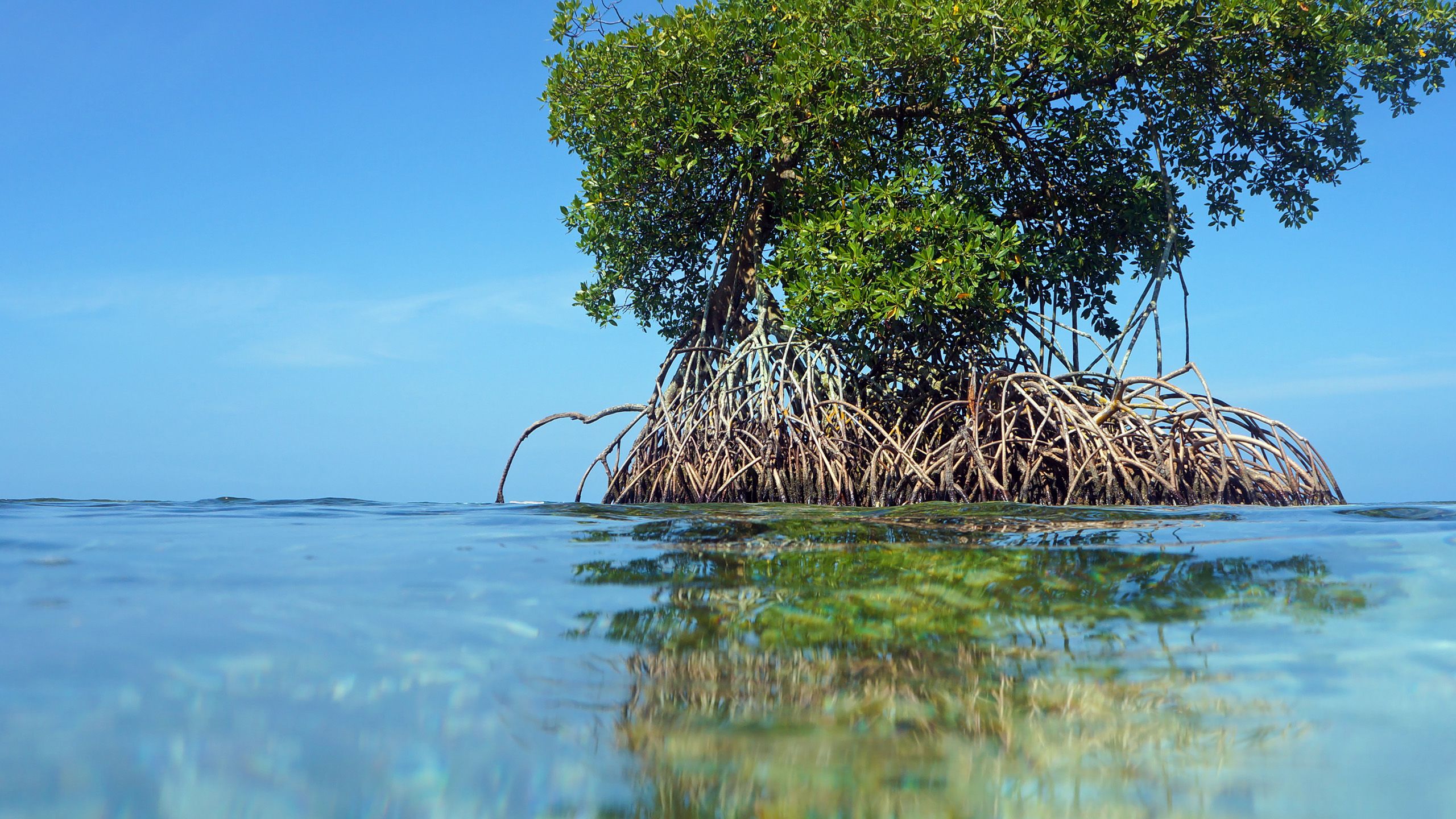

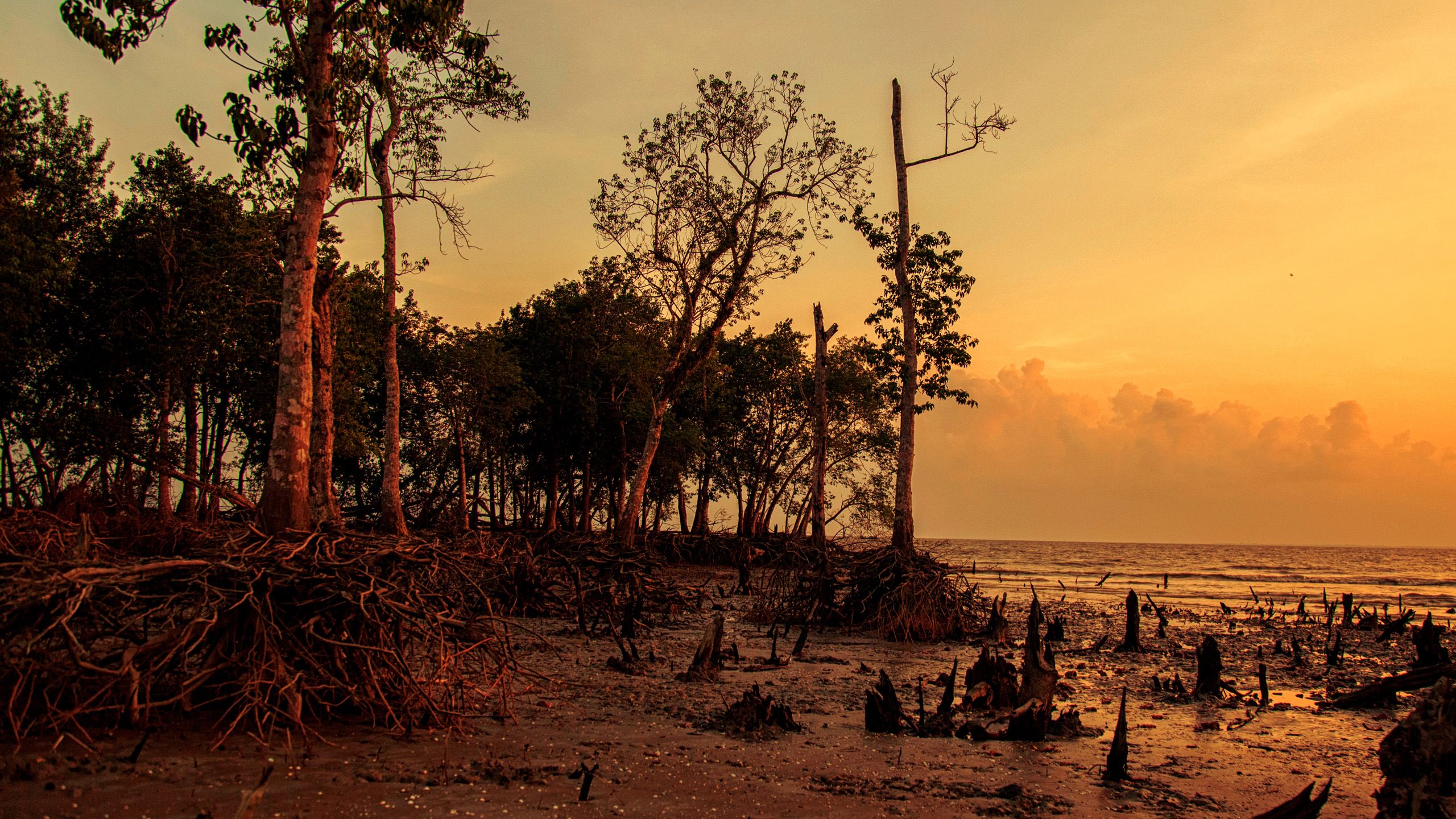
A solution or a problem - it’s up to us
The UK has also experienced terrible wetland loss. Since Roman times, our wetland habitats have declined in extent by 90%. Much of this loss has occurred since the Industrial Revolution with 100,000 hectares per year drained between 1840 and 1880 alone.
Many of the wetlands which remain are in a fragmented and degraded condition. But we mismanage our wetlands at our peril. Damaged wetlands can turn from a natural carbon sink into a source of CO2 emissions that adds to global warming.
Stretching as far as the eye can see across a blanket of purple heather the peatbogs in the Scottish Highlands bear the scars of centuries of misuse. These valuable wetlands have been drained, burnt, built on and dug up. They occupy about 12% of the UK’s land area and store 5.5bn tonnes of carbon, over half of the entire country’s current carbon storage. Deep peat provides a store of at least 3000 million tonnes of carbon, which is 20 times as much carbon stored in the whole of the UK’s forest biomass.
“Wetlands store huge amounts of carbon, which is a key factor in reducing climate change. One of the most efficient places at doing this are peat bogs, and Britain is one of the peatiest places on earth, because of its rain.”
Unfortunately we don’t have a history of treating our peatbogs with much respect. Years of digging out peat to use as fuel and garden compost has had an impact but experts believe restoring and protecting them is one of the biggest environmental no-brainers going.
Peat bogs are incredible ancient landscapes. A single bog can be more than 1,000 years old. Layers upon layers of dead plants, hold the history of the landscape in their decomposing leaves as they turn into a spongy black soil. Between the mud and the sulphurous odours these wetlands are home to a whole range of wildlife including carnivorous plants and up to 380 species of sphagnum moss – many bog dwellers can only survive here.
Last year the Scottish government set a target for reaching zero emissions by 2045. To reach this ambitious goal it has looked to its peat bogs. Scottish Government's Climate Change Plan sets targets to restore 50,000 hectares of degraded peatland by 2020, increasing to 250,000 hectares by 2030. The Scottish government has announced an extra £11m in funding in addition to the £3m awarded to restoration work earlier this year.
And financially? How does this stack up? A recent report from the Office for National Statistics estimated that fully restoring the UK’s lost peatlands could cost between £8bn and £22bn over the next 100 years. But it predicted savings of £109bn in terms of reduced carbon emissions.
Dianna Kopansky, UN Environment Programme’s peatlands expert, agrees that nature is our best ally in the fight against climate change.
“It is quick to react and provide results, but it also takes time to heal, so the time for action and investment in peatlands as an incredible nature-based solution is well overdue,” she says. “Peatland rewetting, restoration, protection and management is not only the duty of governments but should be the goal of every single one of us if we want to reach the goals set out in the Paris Agreement and in the Sustainable Development Goals.”
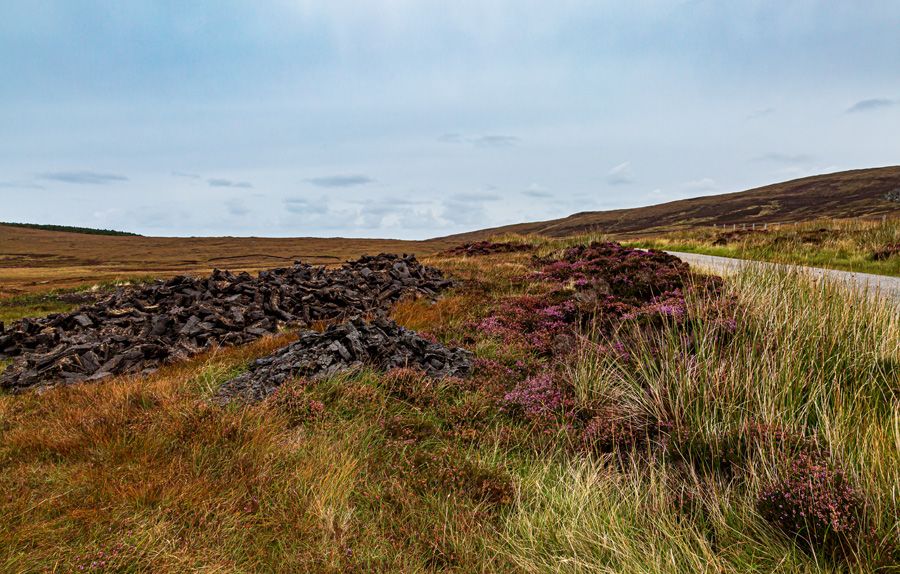
"These areas hold more than one-quarter of all soil carbon, even though they account for only 3% of Earth’s land area. Globally, peatlands hold more than twice as much carbon as the world’s forests do"
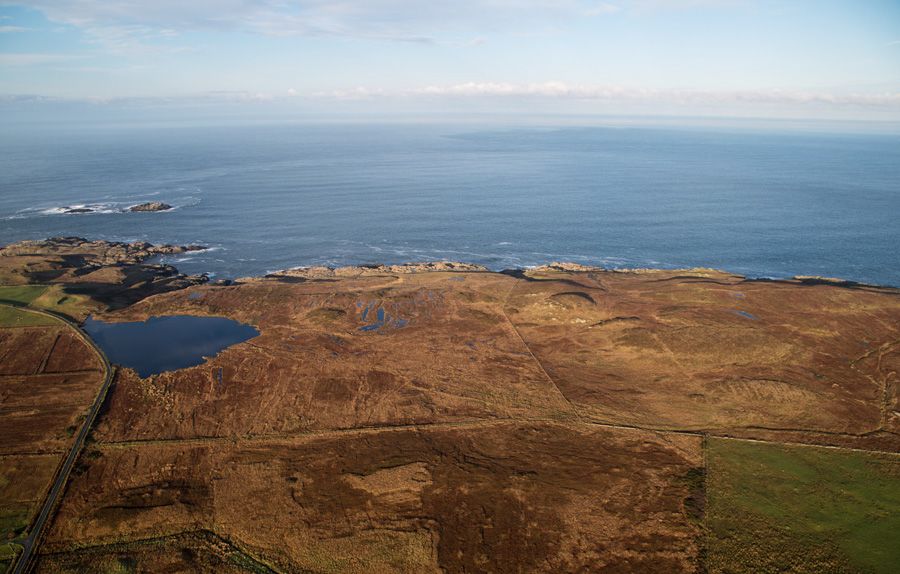
“Peat bogs suck carbon out of the air and lock it in to the ground. The mosses growing in them don’t rot and release carbon like other plants when they die but instead compress and retain the carbon, in enormous quantities. If they are maintained as healthy functioning wetlands, not drained or dug up they can really help with the problem,” explains Geoff.

Geoff Hilton, Head of Conservation Evidence at WWT
Geoff Hilton, Head of Conservation Evidence at WWT

What is being done?
Fighting for a blue recovery.

As we emerge from the global trauma of Covid 19 it seems all the more important that we think carefully about the state of our world.
Experts have drawn direct comparisons between the pandemic and the mistreatment of our environment. Good management of existing wetlands and the restoration of depleted ones is essential if we are to protect the stored carbon and reduce greenhouse gas emissions.
In a joint article published by the The Guardian newspaper on 17 June 2020, Marco Lambertini, Director General of WWF International, Elizabeth Maruma Mrema Executive Secretary of the UN Convention on Biological Diversity and Maria Neira, Director of the World Health Organization Department of Environment, Climate Change and Health, wrote:
“We have seen many diseases emerge over the years – such as Zika, Aids, Sars and Ebola – and although they are quite different at first glance, they all originated from animal populations under conditions of severe environmental pressures. And they all illustrate that our destructive behaviour towards nature is endangering our own health – a stark reality we’ve been collectively ignoring for decades.”
They call for a recovery that will kick start a model that values nature as the foundation for a healthy society and a well-resourced economy.
The UK Government has legally committed itself to bring all greenhouse gas emissions to net-zero by 2050. However, the UK is currently not on track to meet its 4th and 5th carbon budgets, which set reduction targets for the period 2023 to 2032.
To address this, the Government is looking to adopt nature-based solutions to help meet carbon targets, promising to put them on the agenda at the United Nations Climate Change Conference next year. It has also pledged an investment of £640m in a new Nature for Climate fund.
The England Tree Strategy has been launched at a key time with the Government committing to 30,000ha of new woodland across England between 2020 and 2025. Although far below the Committee on Climate Change UK recommendation of 30,000ha a year it will be a significant improvement on current planting rates.
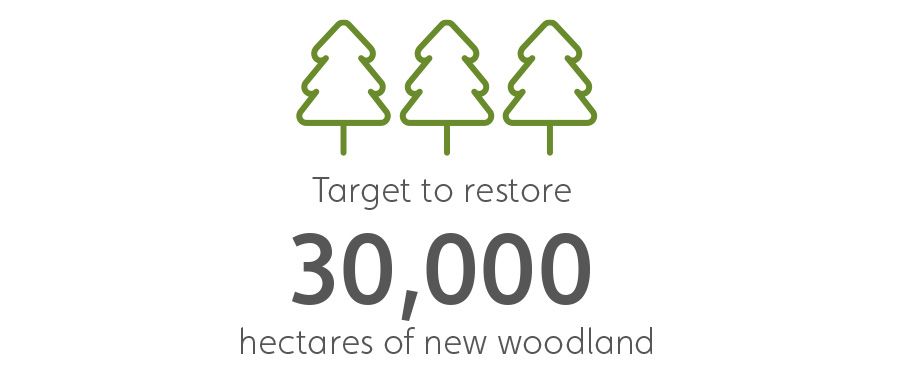
Trees are important, but there is also significant potential for more coastal wetland restoration and creation. A report commissioned for the Natural Capital Committee identified the creation of 22,000 ha of saltmarsh in England (a 54% increase on current extent) as a potential natural capital investment.

The Committee also found saltmarsh restoration to be particularly cost effective. Besides storing carbon, such benefits include coastal defence, fisheries production, recreational opportunities and biodiversity recovery. And we are talking about land that is already vulnerable to sea level rise and likely to become uneconomic to protect in the future.
Presenting some solutions
In the UK and overseas WWT has a strong track record in restoring wetlands, creating new ones and managing them, and empowering others to do the same.
With education and local and national engagement it is possible for local communities to look after the wetlands themselves. And in a recent policy publication the organisation lays out a clear picture of what needs to be done.

“We want to restore or create 100,000 hectares of wetlands to help address the climate, nature and wellbeing crises, new infrastructure which not only assists nature’s recovery but provides co-benefits including soaking up carbon, reducing flood risk, and supporting wellbeing,”
Restoring or creating 100,000 hectares of wetlands is a big challenge. And will require joined-up thinking and partnerships with government, businesses and communities.
WWT wishes to align our work with the aims of Government in order to scale up the use of coastal wetlands to store carbon, unlock its benefits and realise its full potential. This needs to include recognising managed realignment as a sizeable contribution to UK Government carbon targets.
In a recent speech, Martha Rojas Urrego, Secretary General of the Ramsar Convention on Wetlands said:
“We are not powerless to tackle climate change in the little time we have. The solutions are staring us in the face and wetlands are among them. But the world has to fully grasp wetlands’ relationship to climate change. We must start by ending the destruction and degradation of wetlands and restoring lost ones.”
And we’re on to a winner with wetlands. With targeted conservation, unlike other ecosystems like rainforest that can take hundreds of years to recover, wetlands can show improvements in a matter of years.
“The task facing the world is colossal but not insurmountable.
Where there is a will, there is a way. With wetlands, we have a way to save our planet”
Martha Rojas Urrego, Secretary General of the Ramsar Convention on Wetlands.

Learn more about WWT's work
Wetlands are the sponges of our uplands, the filters in our farmland, and the sinks in our cities.
WWT is a global charity specialising in conserving, creating and protecting our biodiverse and carbon-storing wetlands.
Find out more about these incredible habitats, the threats they face and the benefits they bring to all life, and help us spread the word about wetlands.